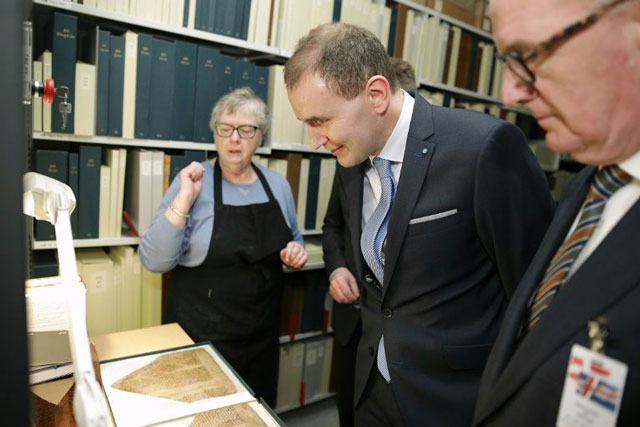
Copenhagen, Denmark | AFP | They recount tales of Viking raids, Norse history, kings and gods: a priceless collection of mediaeval manuscripts, bequeathed by an Icelandic scholar to the University of Copenhagen in the 18th century, that Iceland now wants back.
The UN cultural organisation UNESCO has called them “the single most important collection of early Scandinavian manuscripts in existence”, with the earliest one dating from the 12th century.
Some of the texts — known as the Arnamagnaean Collection — have already been returned to Reykjavik, but 1,400 documents are still locked away in Copenhagen.
The jewel of the collection is an almost complete early 15th century copy of “Heimskringla” — the best known of the Old Norse kings’ sagas, originally written in the 13th century by Icelandic poet and historian Snorri Sturluson.
Unlike many Icelandic mediaeval manuscripts, which have few decorative flourishes, this version of the Heimskringla is richly illustrated with intricate red lettering on each page.
The Arnamagnaean Collection is named after scholar Arni Magnusson, a historian and literature and language expert who was born in Iceland but died in 1730 in Copenhagen, where he left his 3,000 or so manuscripts.
Each time a document from the collection is borrowed from the university, it is insured for up to five million kroner (670,000 euros, $740,000).
– Joint history –
Keen to ensure good relations with its former colony, Denmark granted Iceland’s recurring request to return part of the collection in the 1960s. A treaty signed in 1965 divvied up the goods.
In line with that agreement, more than half of the manuscripts were turned over to Iceland between 1971 and 1997.
The division of documents between the two nations had for years been uncontroversial, but Iceland’s Culture and Education Minister Lilja Alfredsdottir now wants more of the collection given back.
She has raised the profile of the issue and linked it to the construction of a new institute dedicated to Magnusson, which will hold an exhibition of mediaeval documents.
“We think it’s important that the manuscripts be located in Iceland to a greater extent,” Alfredsdottir told AFP.
Matthew Driscoll, the professor in charge of the collection at the University of Copenhagen, is opposed to the idea, arguing that the remaining manuscripts are part of Denmark’s cultural heritage.
The two nations have an intertwined history, Iceland having been under Danish rule from the 1600s until it declared independence in 1944.
Driscoll says the University of Copenhagen has cooperated closely with Reykjavik, digitising all of the works and making them available to researchers.
“These are not things that have been acquired illegally or stolen… Arni owned those manuscripts himself, he was given them or he bought them, and then he left them in a completely legal way to the University of Copenhagen,” Driscoll said.
And even in Iceland, there are mixed opinions about whether the texts should be returned.
Haraldur Bernhardsson, a professor of mediaeval studies at the University of Iceland, said he fully agreed with the need to make cultural heritage visible for future generations.
But he added: “I think we can do that in collaboration with the Arnamagnaean Collection in Copenhagen.”
Keeping all the Icelandic works in Reykjavik would actually limit the number of scholars and academics who study them, some academics say.
“If you really wanted to request Icelandic manuscripts from abroad, you should perhaps prioritise manuscripts that are not currently being studied, which is obviously not the case with the Arni Magnusson collection,” said Bernhardsson.
 The Independent Uganda: You get the Truth we Pay the Price
The Independent Uganda: You get the Truth we Pay the Price




